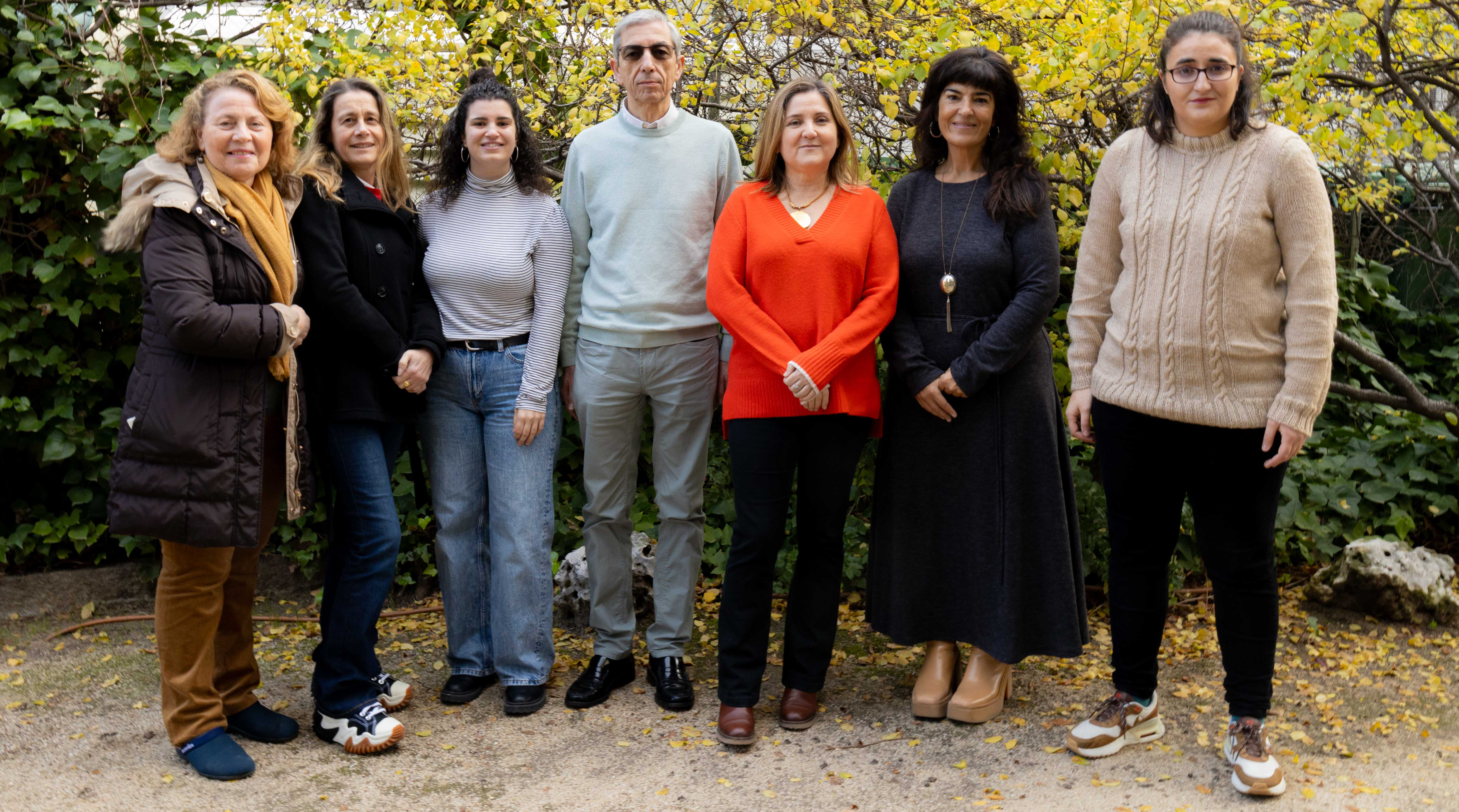
La actividad del Grupo de Nanohíbridos y Polímeros Interactivos se centra en el diseño molecular y multifuncional de nuevos materiales poliméricos nanoestructurados y nanohíbridos con propiedades/aplicaciones de alto interés tecnológico en Biomedicina, Optoelectrónica, Energía y Medioambiente.
Estos nuevos nanomateriales integran componentes de distinta naturaleza, donde el componente inorgánico aporta propiedades ópticas, electrónicas, magnéticas o catalíticas singulares dependientes de su naturaleza, tamaño, forma y distancia entre nanopartículas (NPs), mientras que, el componente polimérico es esencial para adaptar la NP a su aplicación final, ofreciendo un amplio abanico de propiedades físico-químicas.
La química de polímeros permite aplicar rutas sintéticas controladas, reacciones de modificación química específicas o nuevas técnicas de ensamblaje para obtener polímeros "a medida", con gran versatilidad en su estructura, funcionalidad, arquitectura y nanoestructura y, finalmente, promover la hibridación con el resto de componentes.
Publicaciones Destacadas
“The synthesis of switch-off fluorescent waterstable Copper nanocluster Hg2+ sensors via a simple one-pot approach by an in situ metal reduction strategy in the presence of a thiolated polymer ligand template”. J. Benavides, I. Quijada-Garrido and O. García. Nanoscale. 12(2): 944-955 (2020) (DOI: https://doi.org/10.1039/c9nr08439h).
“Effects of fabrication methods on the performance of luminescent solar concentrators based on doped polymer optical fibers”. E. Arrospide, M.A. Illarramendi, I. Ayesta, N. Guarrotxena, O. García, J. Zubia, G. Durana. Polymers, 13(3): 424-438 (2021). (DOI: https://doi.org/10.3390/polym13030424).
“Effect of porous organic polymers in gas separation properties of polycarbonate based mixed matrix membranes”. L. Rodríguez-Jardón, M. López-González, M. Iglesias, E. M. Maya. Journal of Membrane Science, 619: 118795 (2021). (DOI: https://doi.org/10.1016/j.memsci.2020.118795).
“RAFT Hydroxylated Polymers as Templates and Ligands for the Synthesis of Fluorescent ZnO Quantum Dots”, L. San José, O. García, I. Quijada-Garrido, M. López-González. Nanomaterials, 12(19): 03441 (2022). (DOI: https://doi.org/10.3390/nano12193441).
“Fast and Sustained Axonal Growth by BDNF Released from Chitosan Microspheres”, I Aranaz, N. Acosta, J. Revuelta, A. Bastida, V. Gómez-Casado, C. Civera, L. Garrido, E. García-Junceda, A. Heras, A.R. Alcántara, A.R., A. Fernández-Mayoralas, E. Doncel-Pérez. Marine Drugs, 21(2): 91 (2023) (DOI: https://doi.org/10.3390/md21020091).
Proyectos relevantes
- NUEVAS ESTRATEGIAS DE SÍNTESIS BASADAS EN POLÍMEROS PARA LA GENERACIÓN "IN SITU" DE NANOESTRUCTURAS HÍBRIDAS MULTIFUNCIONALES (Ref: PGC2018-095364-B-I00). Duración: del 01/01/2019 al 30/09/2022. Organismo financiador: MINISTERIO DE CIENCIA, INNOVACIÓN Y UNIVERSIDADES (Dotación: 96.800€).
- ESTUDIO MOLECULAR DE TRANSPORTE DE GASES EN POLÍMEROS VITREOS MEDIANTE RESONANCIA MAGNÉTICA NUCLEAR Y ESPECTROSCOPÍA DIELÉCTRICA (Ref: PID2019-108552GB-I00). Duración: 01/06/2020 al 31/05/2023. Organismo financiador: MINISTERIO DE CIENCIA E INNOVACIÓN (Dotación: 66.550€)
- DISEÑO DE ESTRATEGIAS SINTÉTICAS PARA EL DESARROLLO DE PREFORMAS DE FIBRA ÓPTICA POLIMÉRICA CON MATERIALES NANOESTRUCTURADOS LUMINISCENTES EN CONCENTRACIÓN RADIAL CRECIENTE (Ref: TED2021-129959B-C22). Duración: del 01/12/2022 al 30/11/2024. Organismo financiador: MINISTERIO DE CIENCIA E INNOVACIÓN (Dotación: 113.735€).
- NANO-OBJETOS POLIMÉRICOS INTELIGENTES DIRIGIDOS A LA FORMACIÓN DE HÍBRIDOS CON NANOPARTÍCULAS INORGÁNICAS Y/O MOLÉCULAS BIOACTIVAS PARA APLICACIONES DE DETECCIÓN Y BIOMÉDICAS (Ref: PID2022-137762NB-I00). Concesión: 15/07/2023. Organismo financiador: MINISTERIO DE CIENCIA E INNOVACIÓN (Dotación: 125.000€).